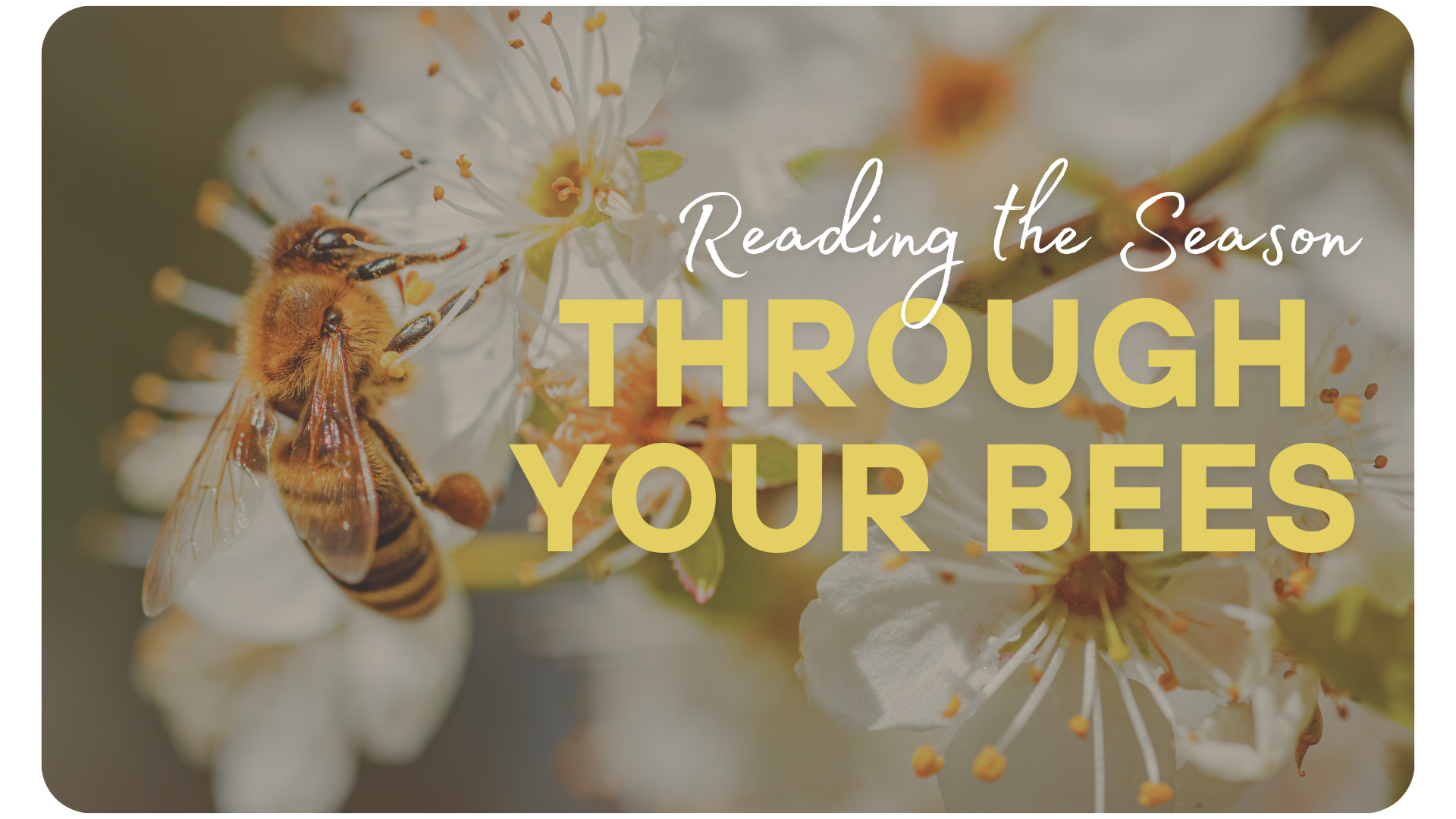Reading the Season Through Your Bees
If you’ve spotted your bees coming home with fat, colorful blobs on their hind legs, congratulations — pollen pants season has arrived. Those bright bundles, packed into the bees’ corbiculae (the specialized pollen baskets on their hind legs), are more than just a charming sight. They’re a highly visible sign that your colony has shifted from winter survival mode into active spring buildup. The presence of pollen foragers means brood is being raised, nurse bees are active, and the colony has enough stability to spare workers for outside duty.
Here’s what to look for this spring and some tips on managing your apiaries:
1. Pollen Means Brood, and Brood Means Growth
As daytime temps hit the 50s°F and early forage (like red maple, elm, willow, and henbit) comes online, your colony begins ramping up brood production. That pollen coming in? It’s not for the pantry — it’s going straight into brood food for larvae. If you’re seeing multi-colored pollen loads at the entrance, odds are the queen is laying and the hive is expanding.
Action: On warm, calm days (~55°F+), check for brood, cluster size, food stores, and signs of a laying queen. Light colonies may need 1:1 syrup or pollen substitute to bridge the final gap until nectar flow picks up.
2. Spring Build-Up and Early Inspections
By late March and into April, your colony is gaining population fast. But so is internal pressure. A crowded hive with ample resources can quickly become swarm-prone — especially if drone brood begins appearing. Monitor brood patterns, available space, and any swarm cells (usually along the frame bottoms).
Action: Perform full inspections every 10–14 days. Reposition frames, add drawn comb or foundation, and consider adding a second brood box or honey super early. If you're seeing swarm cells in a booming colony, a preemptive split may be the best move.
3. Peak Flow = Peak Activity = Peak Risk
By May, black locust, tulip poplar, clover, and orchard blooms can trigger a major nectar flow in the Mid-Atlantic. Strong colonies can fill a honey super in 7–10 days — but also have the highest likelihood of swarming if space runs out. Bees may beard at the entrance or start backfilling the brood nest with nectar, limiting the queen’s laying space.
Action: Stay ahead of them — keep adding supers before they’re full. Continue swarm checks. If you do catch a swarm (or make splits), remember that these colonies are initially broodless, making them ideal candidates for oxalic acid vaporization. With no capped brood, OA can reach nearly 100% of varroa mites, giving your new colony a clean start.
4. Mind the Mites Before the Flow
Once supers are on, your treatment options become limited. That makes early spring the ideal window to check and manage mites — especially before heavy brood is capped. Use alcohol washes or sugar rolls to get baseline counts and consider a vaporization or contact treatment now while the mite population is still low.
Action: Treat only according to label instructions. If using oxalic acid, time your application when brood is minimal (or absent) to maximize efficacy. Consider this especially after installing packages, catching swarms, or making early splits.
5. Stay Curious, Stay Connected
Beekeeping is a mix of livestock care, seasonal timing, and constant observation. Watching pollen traffic, noting bloom cycles, and comparing notes with other beekeepers will make you sharper every season. If you’re feeling unsure, remember — we all start somewhere. Sharing questions, photos, and even mishaps with your local club or online group is part of the process.
In a nutshell: Watch pollen traffic. Feed if needed. Inspect early. Prevent crowding. Add space. Monitor mites. Split strong hives. Catch swarms if you can. Treat smart. And enjoy every minute of it.
And remember- this is just a collection of tips from our own personal experience as well as general information available on the internet. In the end, you will find what works for you and your bees through trial, error, observation, and more! And of course, it's always a good idea to get plugged into your local bee clubs and join online forums or groups where the community at large can help offer more insight!
Happy Beekeeping from the Lorob Bees team :)



Share:
Lorob Bees: Innovating for the Future of Beekeeping
The Importance of Innovation in Beekeeping and Livestock